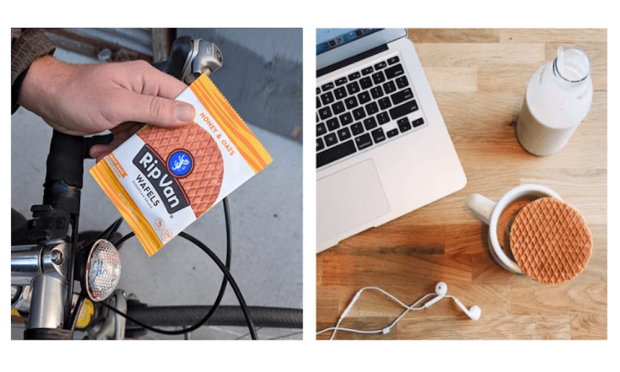The Journey Of The Stroopwafel To Starbucks’ Shelves

Starting a business out of an Ivy League dorm room is far from a rare story in the world of American entrepreneurship in the last several decades. Arguably some of the Ivy League’s most successful students over the last 20 years have been dropouts.
Still, when people think of businesses founded in dorm rooms, they tend to think of things like software development, which is about properly sized for a small environment with good internet access but limited amenities otherwise. A food business, on the other hand, seems more of a stretch.
And yet that is more or less what Rip Pruisken did when he founded Rip Van Wafels nearly a decade ago out of his dorm room at Brown University. Pruisken is the son of two Dutch physicists and found himself bitten by the entrepreneurial bug late in his college career. But he didn’t know what exactly he wanted to go into business doing, until a bit of chance snacking put him on the path to his innovation “ah-ha moment.”
What he discovered, or more accurately remembered, was the stroopwafel, a common Dutch treat made from two thin waffle pastries melded together with a syrup center. Stroopwafels were available on every corner in his home city of Amsterdam, but were more or less unheard of in Providence, Rhode Island — which meant no matter how many he brought back with him, they were always devoured in short order by his American friends. He realized he just might be on to a product ready to expand into a new market.
“I literally started making them in my dorm in college, and started selling them on campus during my junior year of college,” Pruisken told TechCrunch of Rip Van Wafels’ early days. The brand stayed on campus for two years building its market and establishing its name.
The company was originally called Van Wafels — and might well still be but for the cease-and-desist letter that showed up from frozen food maker Van’s, which among other products sells waffles. A Brown professor suggested the name Rip Van Wafels, and Pruisken liked that so much that he not only changed the name of the business — he actually changed his own first name from Abhishek to Rip.
Rip Van Wafels’ migration from the campus started in 2012-2013 when the company realized that an unexpected bit of demographic was showing up in its customer data. A local tech company (founded by two former Brown students) could not get enough stroopwafels.
“We realized we found this insight that one of our customers in the northeast was a tech company, and we talked to them and they said that it was the perfect treat that was an alternative to a candy bar,” he said, noting that the latest iteration of the snack contains just nine grams of sugar, down from the first commercial batch’s 14 grams.
“We’re seeing whether we can retain the taste making this delicious product without all the sugar,” Pruisken said.
Realizing that the market for such a snack was wider and different than they’d imagined, Pruisken set out on the road to attempt to sell his product at every tech company that would let him through the front door. A lot of cold calls and unannounced house visits later, Rip Van Wafels found their way into dozens of tech company kitchens in the San Francisco bay area powered by the unceasing hunger of tech workers for a high-flavor snack that is relatively low in sugar and calories.
The pattern at those firms, Pruisken said, was pretty consistent. They’d try a case of the product out on a provision basis, and before long one case would become two. Then 10. Then 20.
Today Rip Van Wafels remains a darling in tech firms’ mini-kitchens, but is also on the shelves at 12,000 Starbucks locations. It is also available for sale at Whole Foods.
Going forward, the firm has two goals, Pruisken said. The first, he said, is to continue improving its stroopwafel.
“We have been reinventing our product every two years,” he said. “We are trying to make our product healthier while providing this very indulgent taste.”
The second goal, he said, is thinking bigger than the stroopwafel — and into the wider world of snack development. Snacking, according to Pruisken, shouldn’t be a shameful habit, but a fun experience built around eating something that tastes good without being terrible for you.
